This lovely sauté is a standout.

| Type | Tin-lined sauté in hammered finish with cast iron handle attached with three copper rivets |
| French description | Sauteuse étamée et martelée avec queue de fer fixée de trois rivets en cuivre |
| Dimensions | 26cm diameter by 7.3cm tall (10.2 by 2.9 inches) |
| Thickness | 3.3mm |
| Weight | 3850g (8.5 lbs) |
| Stampings | GAILLARD PARIS |
| Maker and age estimate | Gaillard; 1930s-1950s? (revised) |
| Source | eBay |
| Owner | Stephen Whalen |
This sauté pan is sized for a home cook, but at 3.3mm it is as thick as a restaurant piece and that makes it special. In my experience copper thicker than 3mm was primarily offered in sizes over 30cm diameter — that is, pieces at the scale of commercial restaurant kitchens. This sauté is more manageable in size, but its extra mass — 8½ pounds, heavy for a home cook! — makes it exceptionally even-heating.
It’s also really lovely. The martelage has large facets like the hexagonal scales on a turtle’s shell.
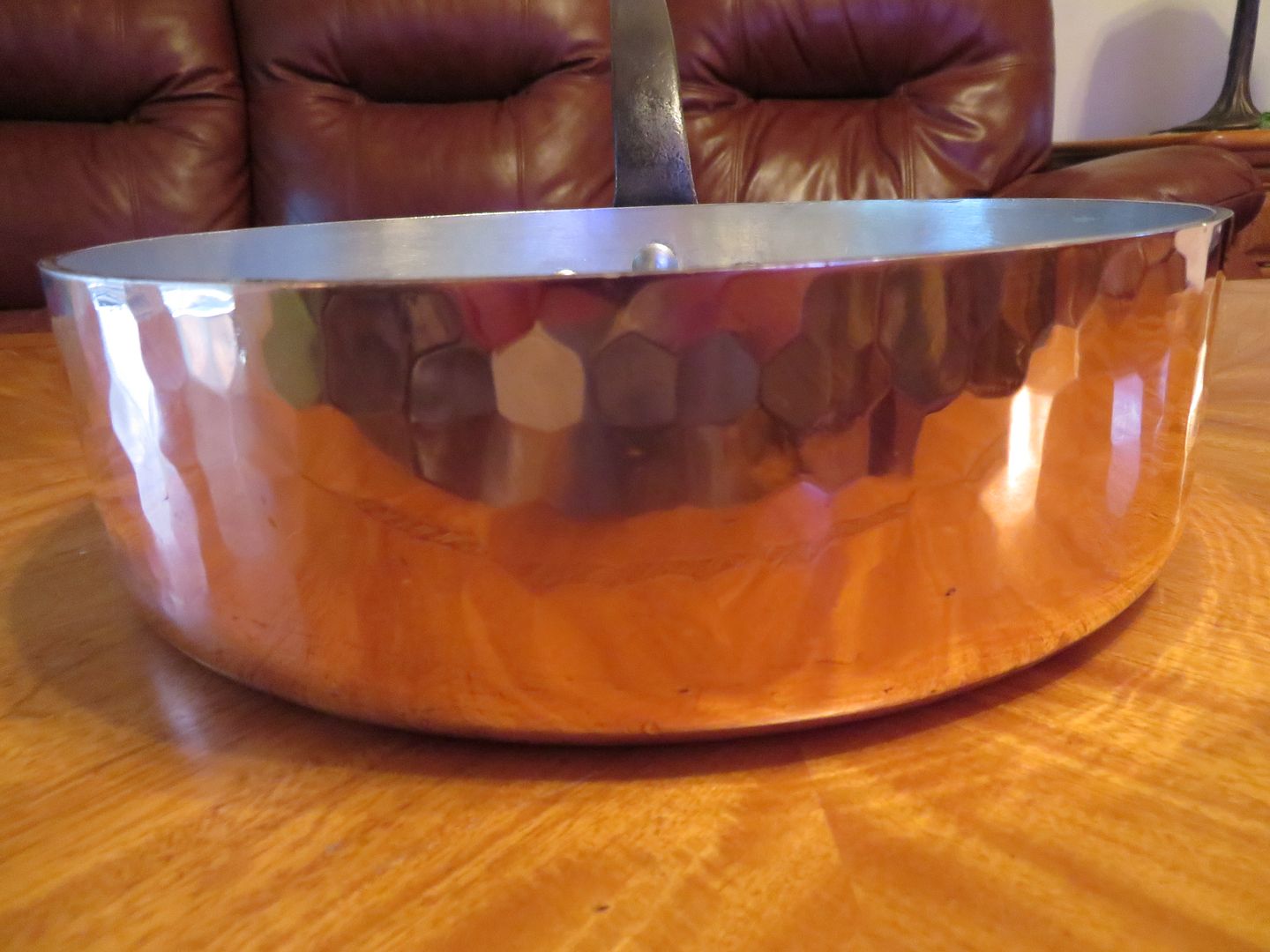
Unusually for a Gaillard piece of the modern era (at least in my experience), the base is also hammered. This is a nice touch both stylistically and functionally. Surface hammering like this is not simply for the appearance but also to work-harden the copper and make it more resistant to dents.
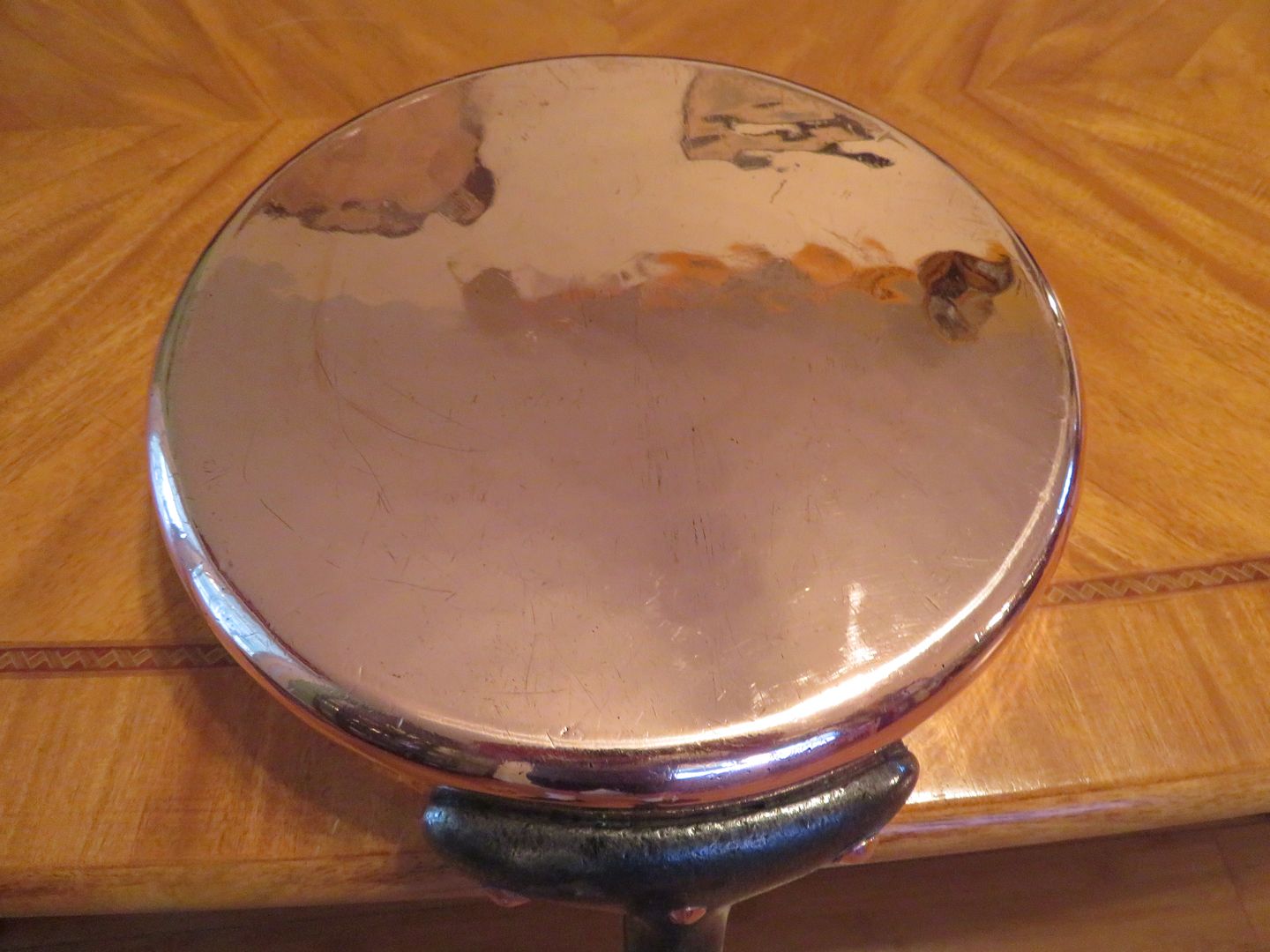
The handle is cast iron, and has been filed to remove burrs from the casting. The rivets have been finished to shallow cones.
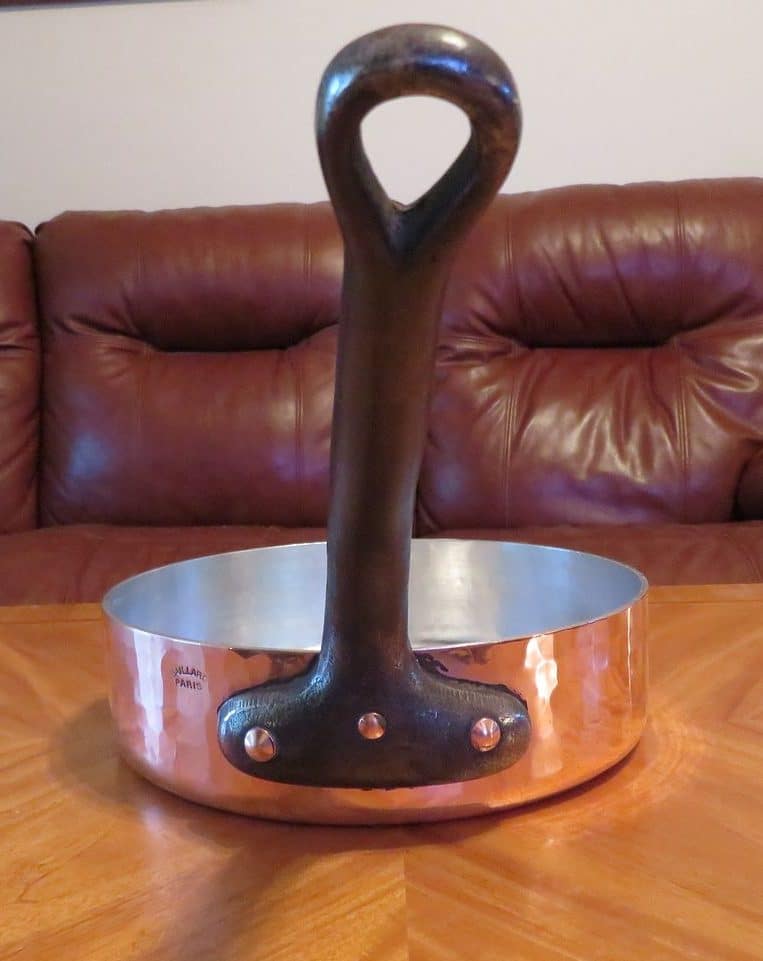
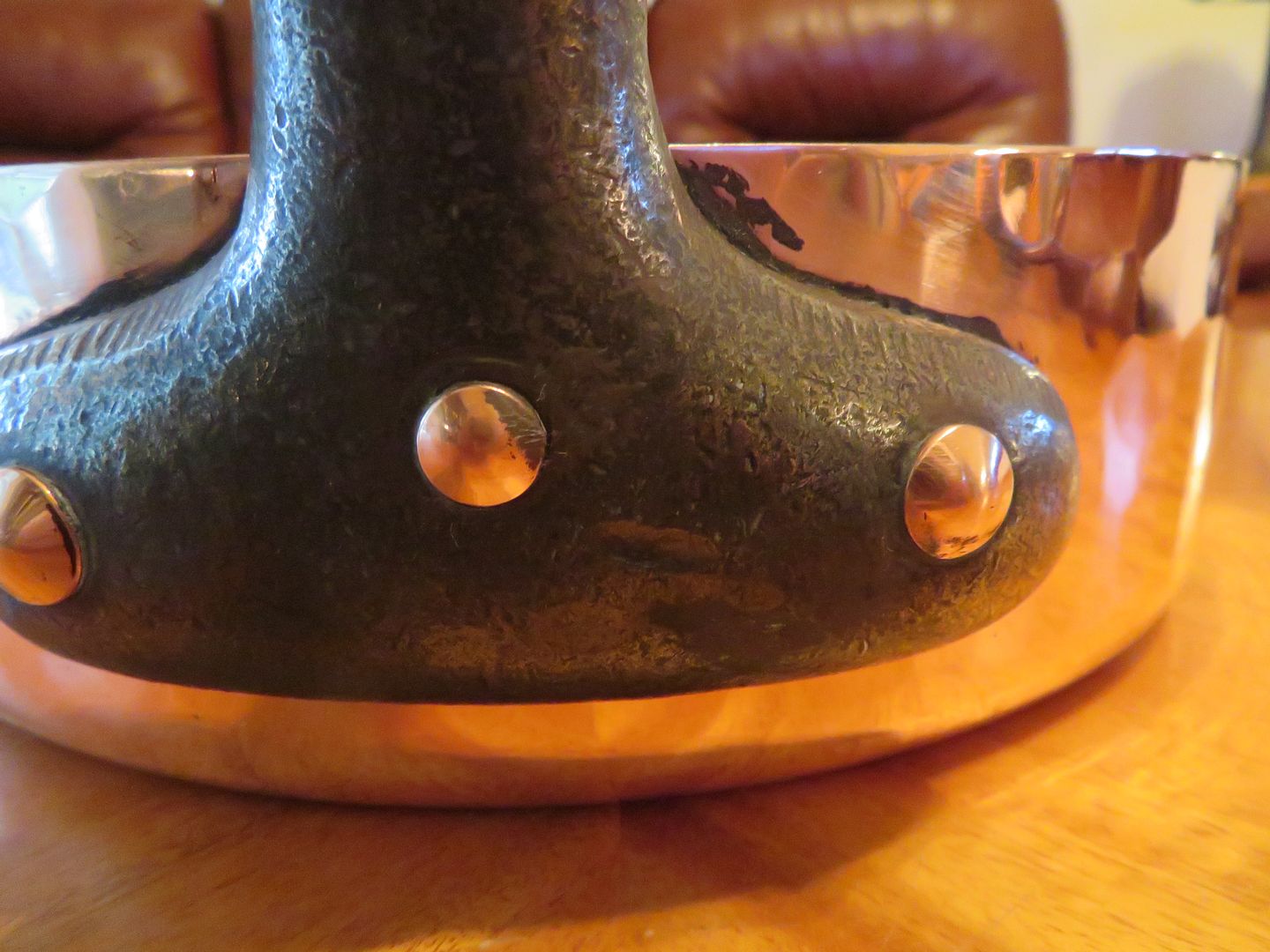
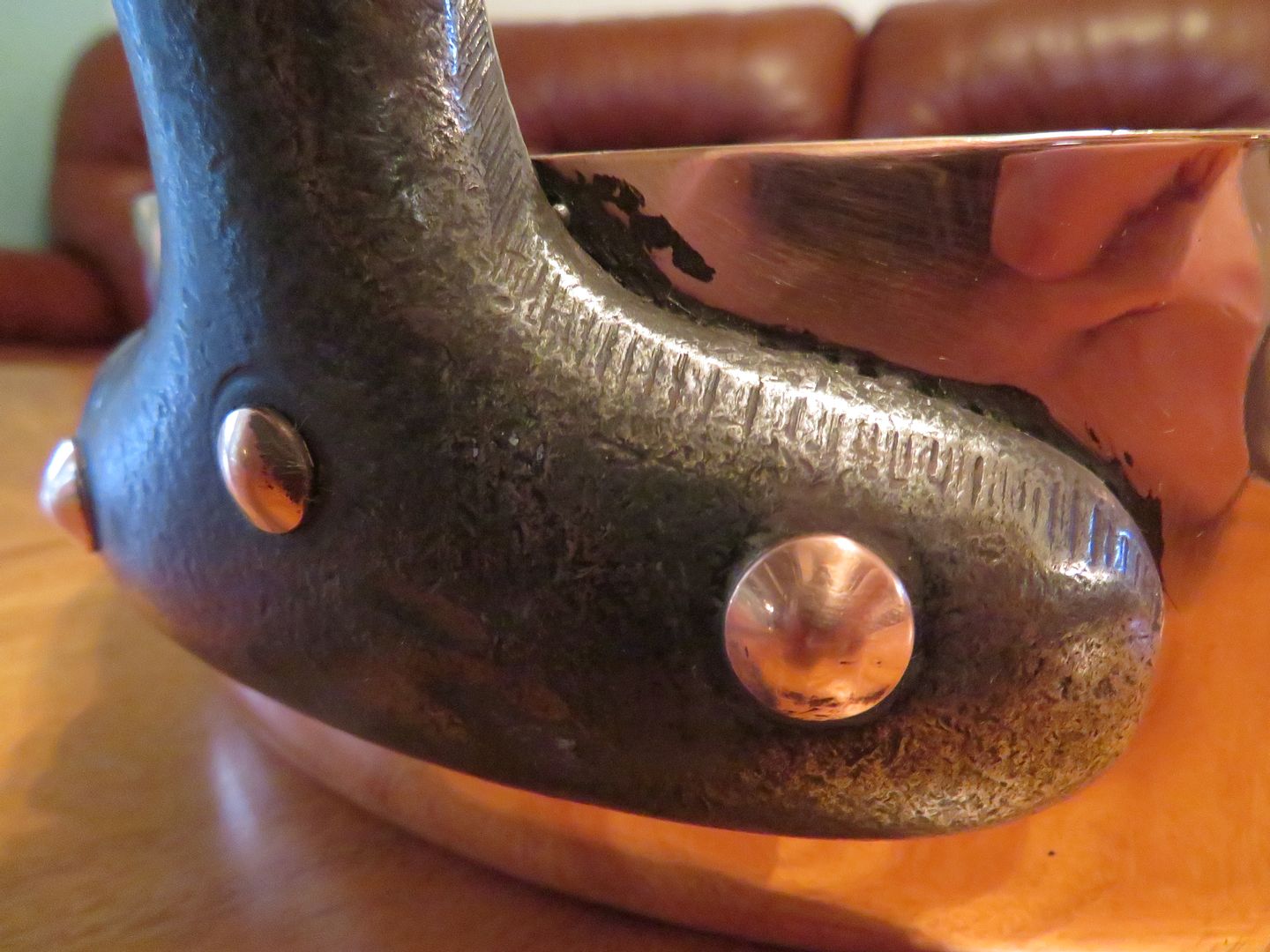
The interior rivet heads are almost smooth but I detect what I think are faint numbers, as I would expect to see on a modern era pan with mass-produced rivets.
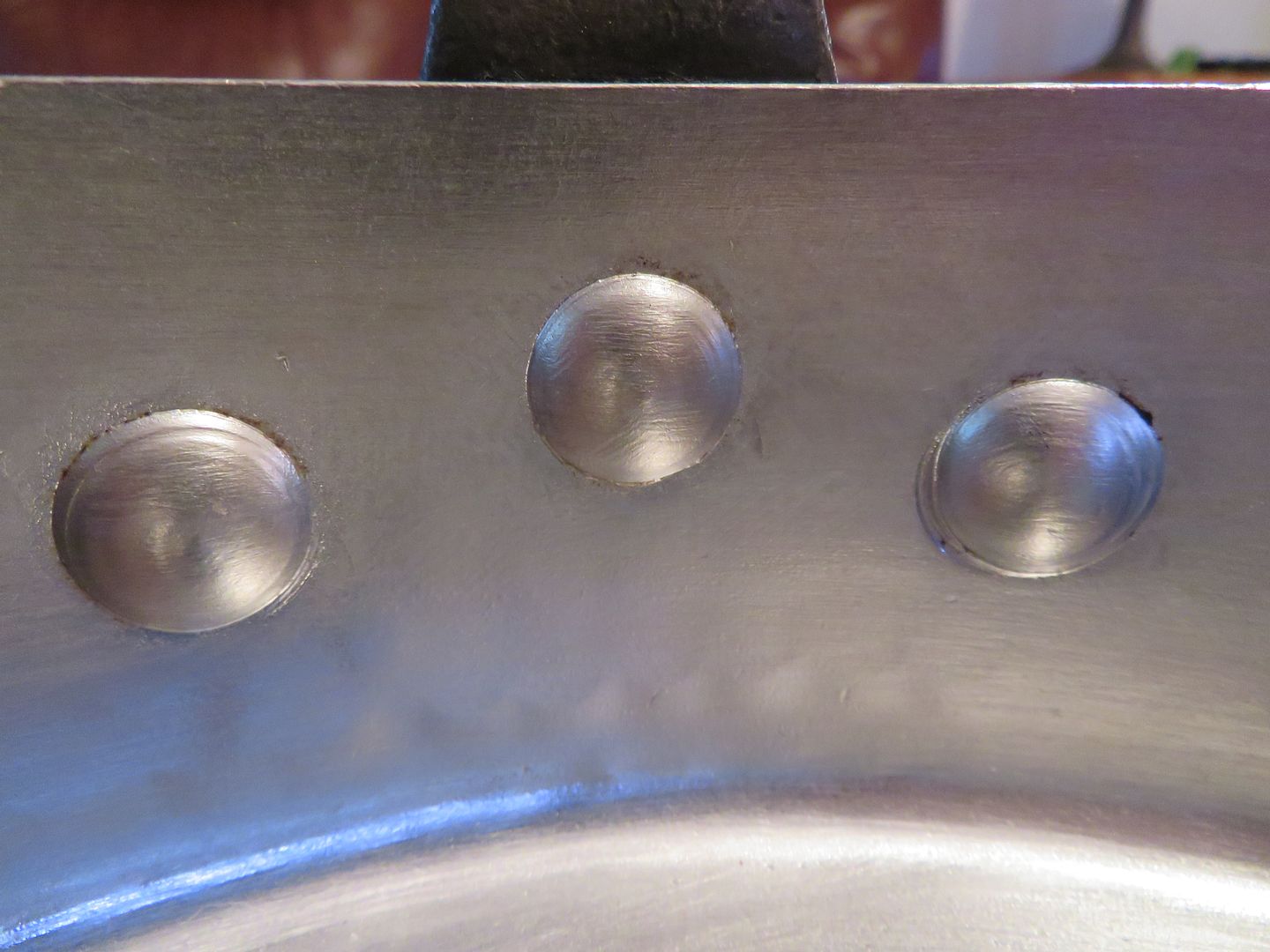
Stephen says, “The pan was bought on eBay and was in excellent condition except for the tin so I sent it off to East Coast Tinning and Jim did his usual excellent work.” I agree — the pan looks beautiful, inside and out.
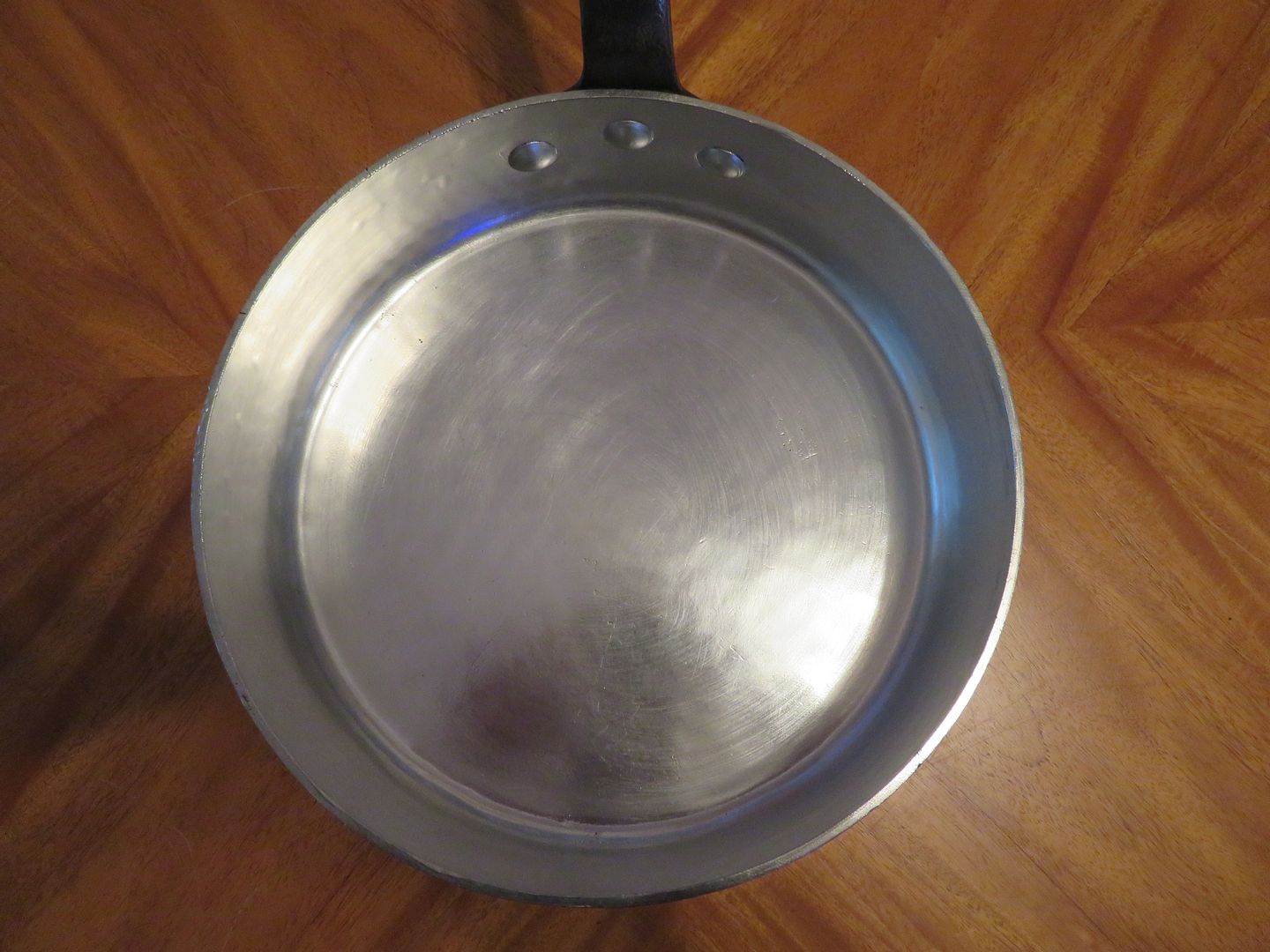
Finally, I wish to note that this pan has an excellent and clear example of the genuine Gaillard stamp for the 1930s-1940s period. I believe this stamp fits in the period after the “J. GAILLARD” stamps of Jules Gaillard, a period of production that I believe ended in the mid to late 1930s. There are multiple “Gaillard Paris” stamps that followed, and I believe this was one of the first, which puts it from the late 1930s to perhaps the late 1940s or early 1950s. It does not have any beveled planes around the base which suggests 1940s (post-WWII) to me, but that is a guess. (My earlier estimate was 1960s-80s but I think this was incorrect on my part. As always, these time estimates are just that — the mid-20th century copper production is poorly documented, and I am still learning.)
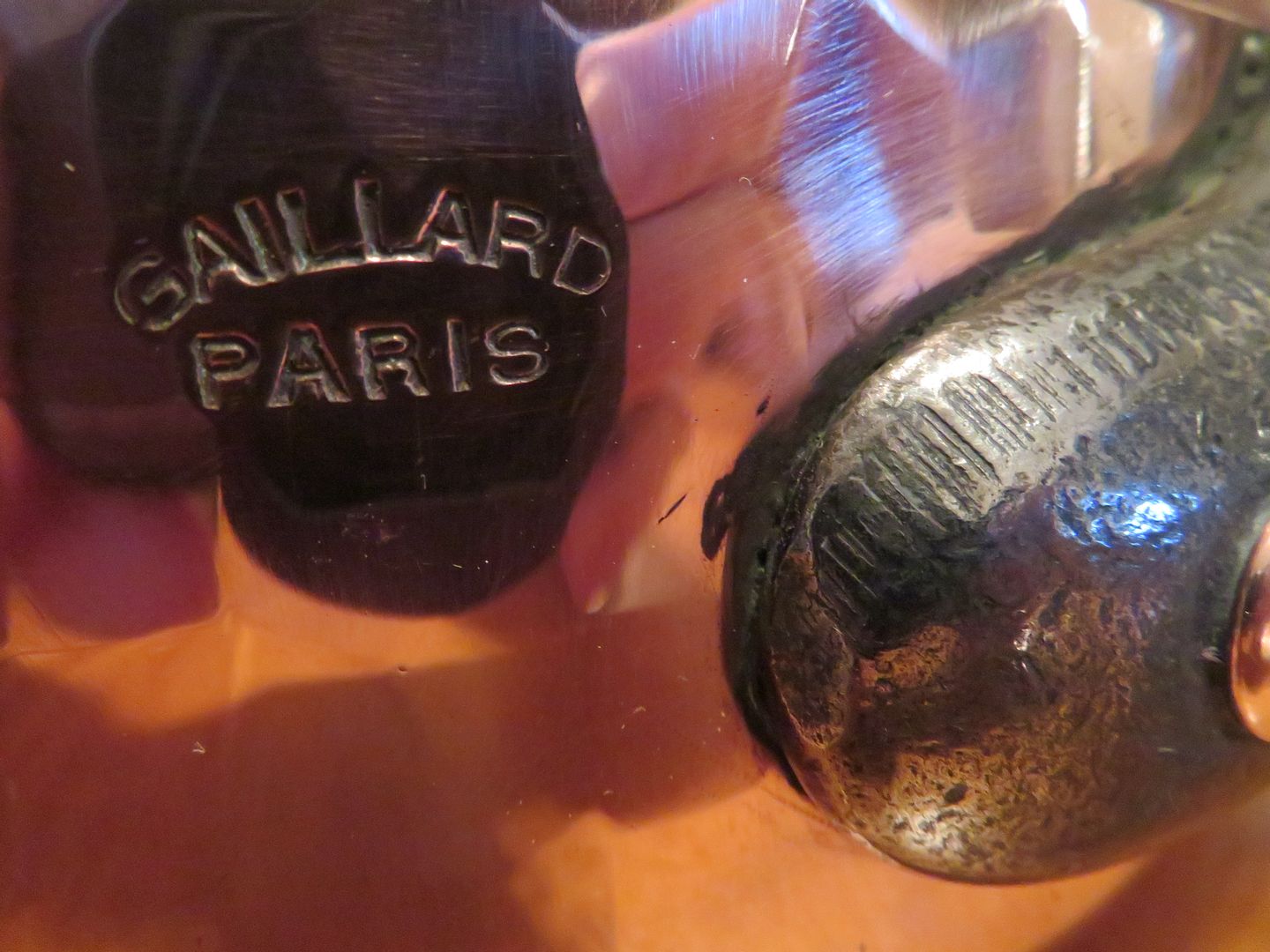
What I really love about this piece is that it is very usable. I don’t just mean its size — I mean that it feels modern and robust. If you are looking for a piece like this, keep an eye out for this Gaillard mark, as well as pieces stamped for Matfer and Williams-Sonoma. Check for weight: a 26cm sauté that is 3mm thick should weigh over 8 lbs.

Steve, thank you for sharing this lovely piece with us. It is a great find in excellent shape and I know you will love using it!
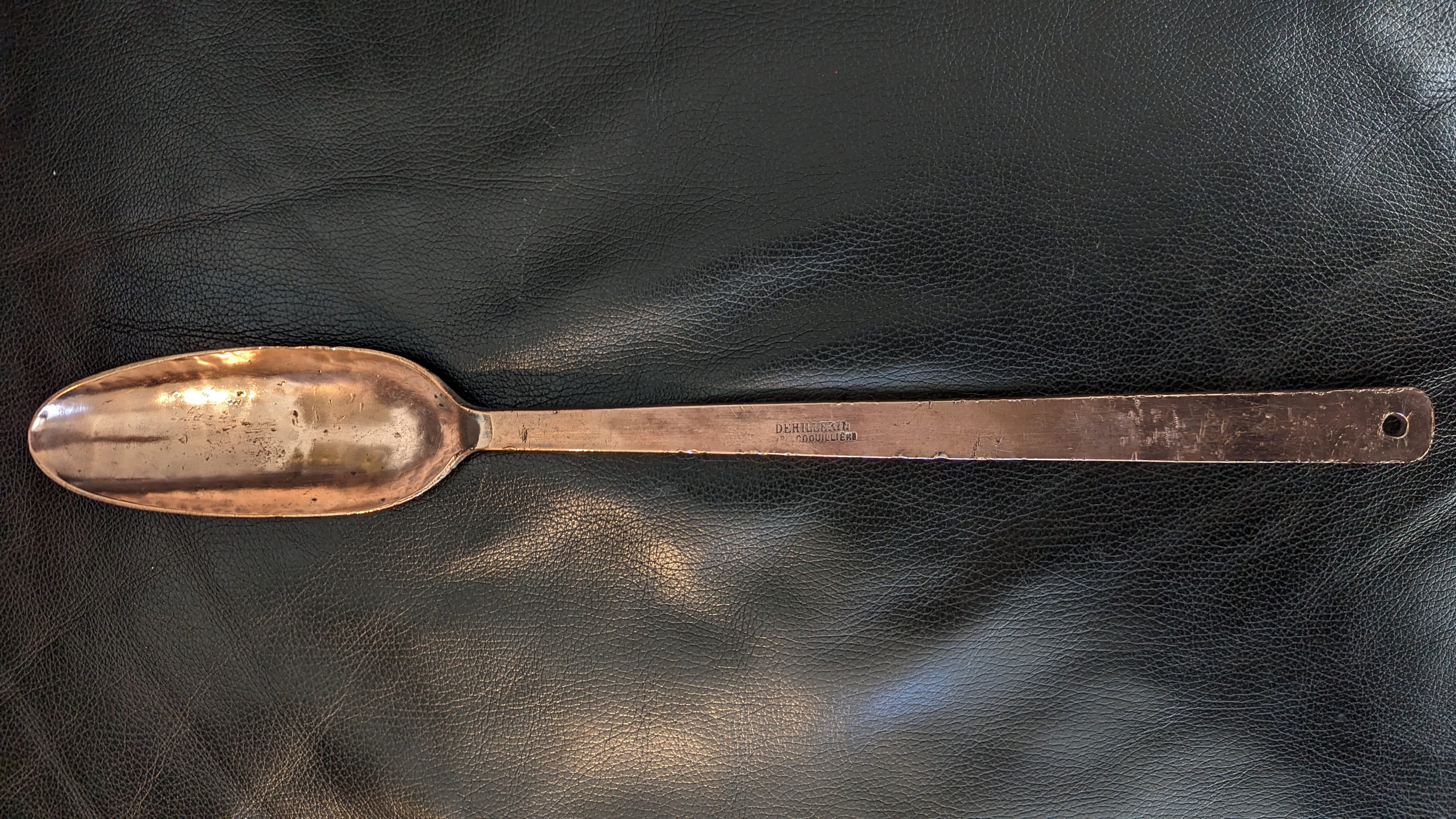

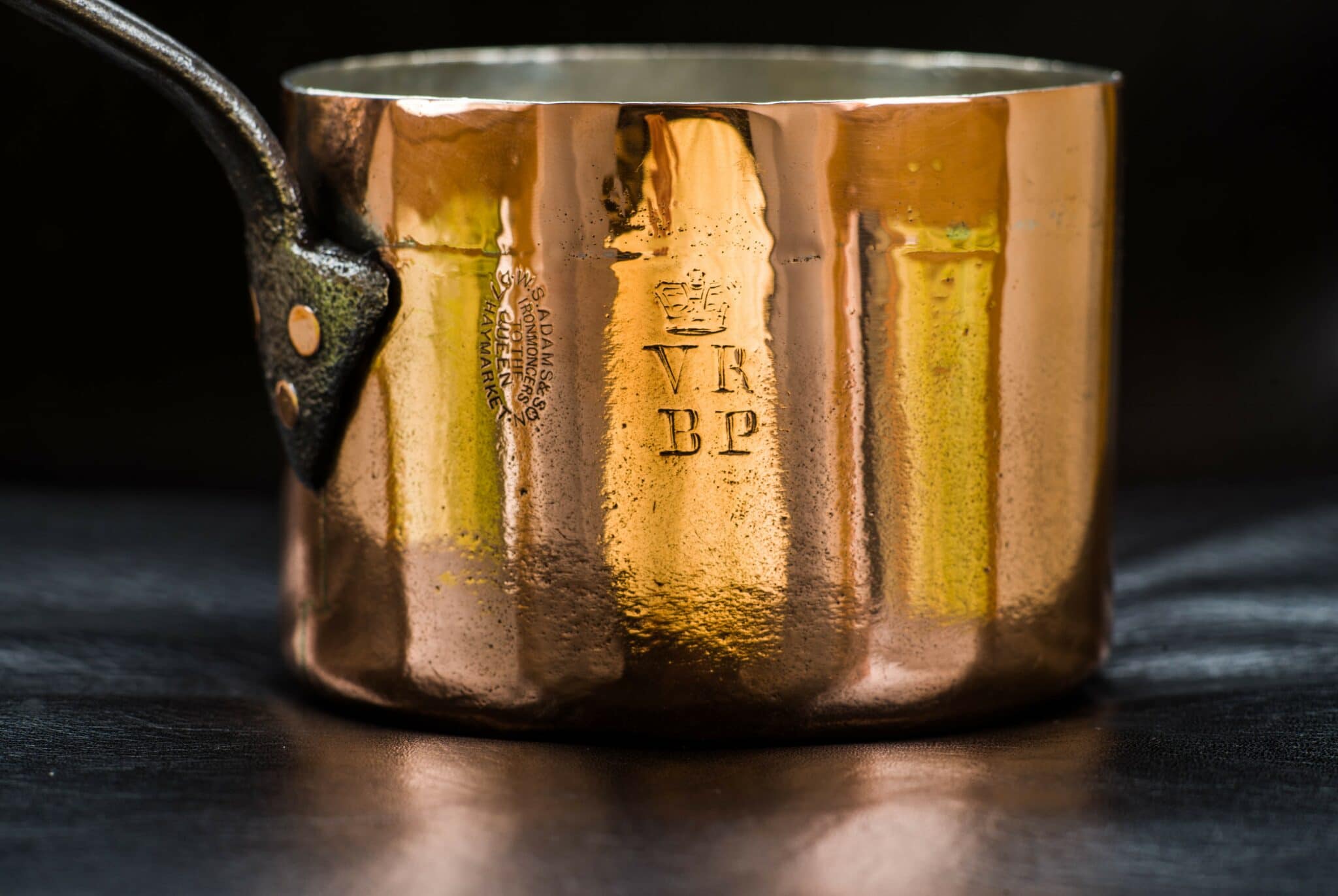

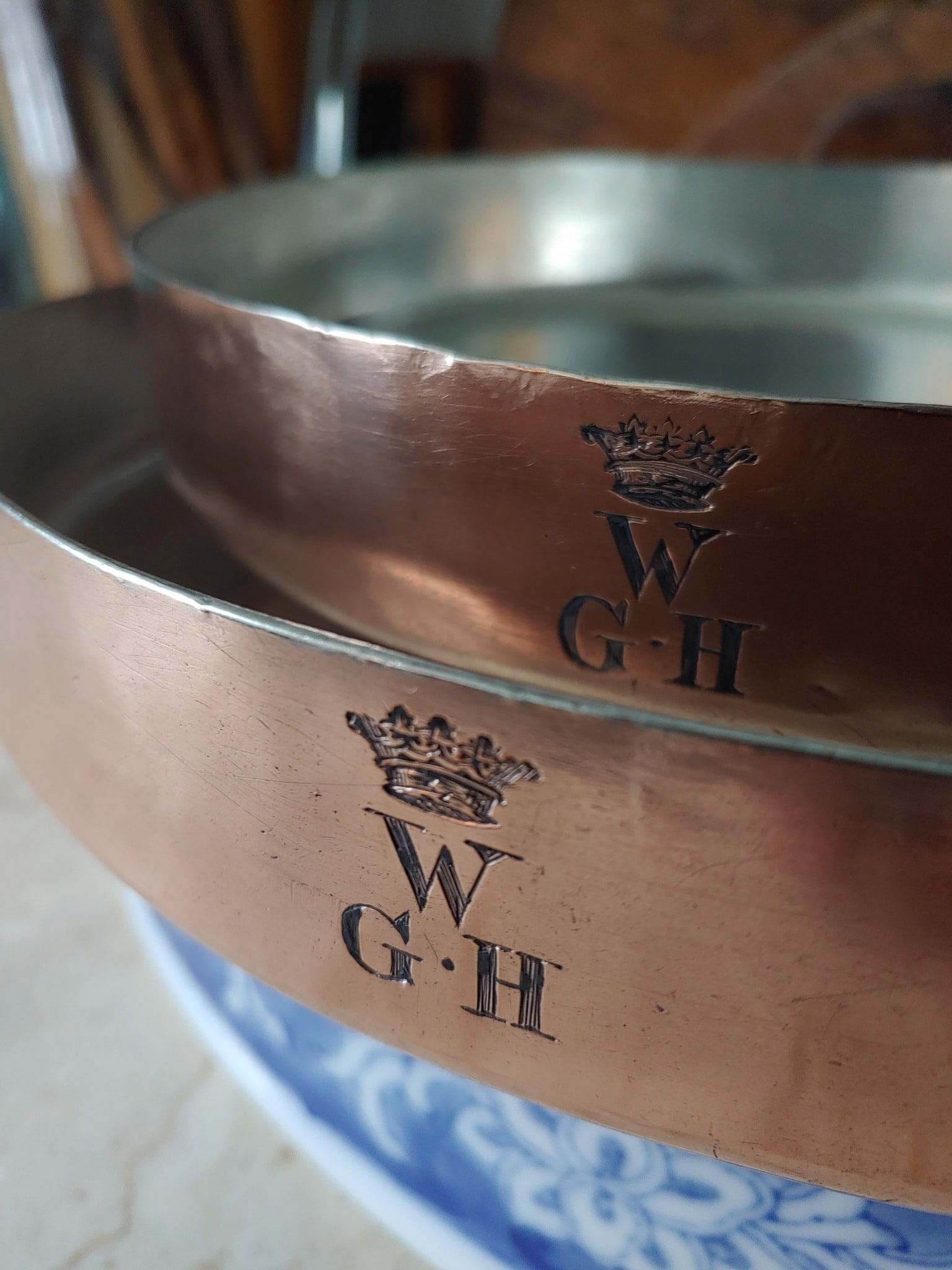
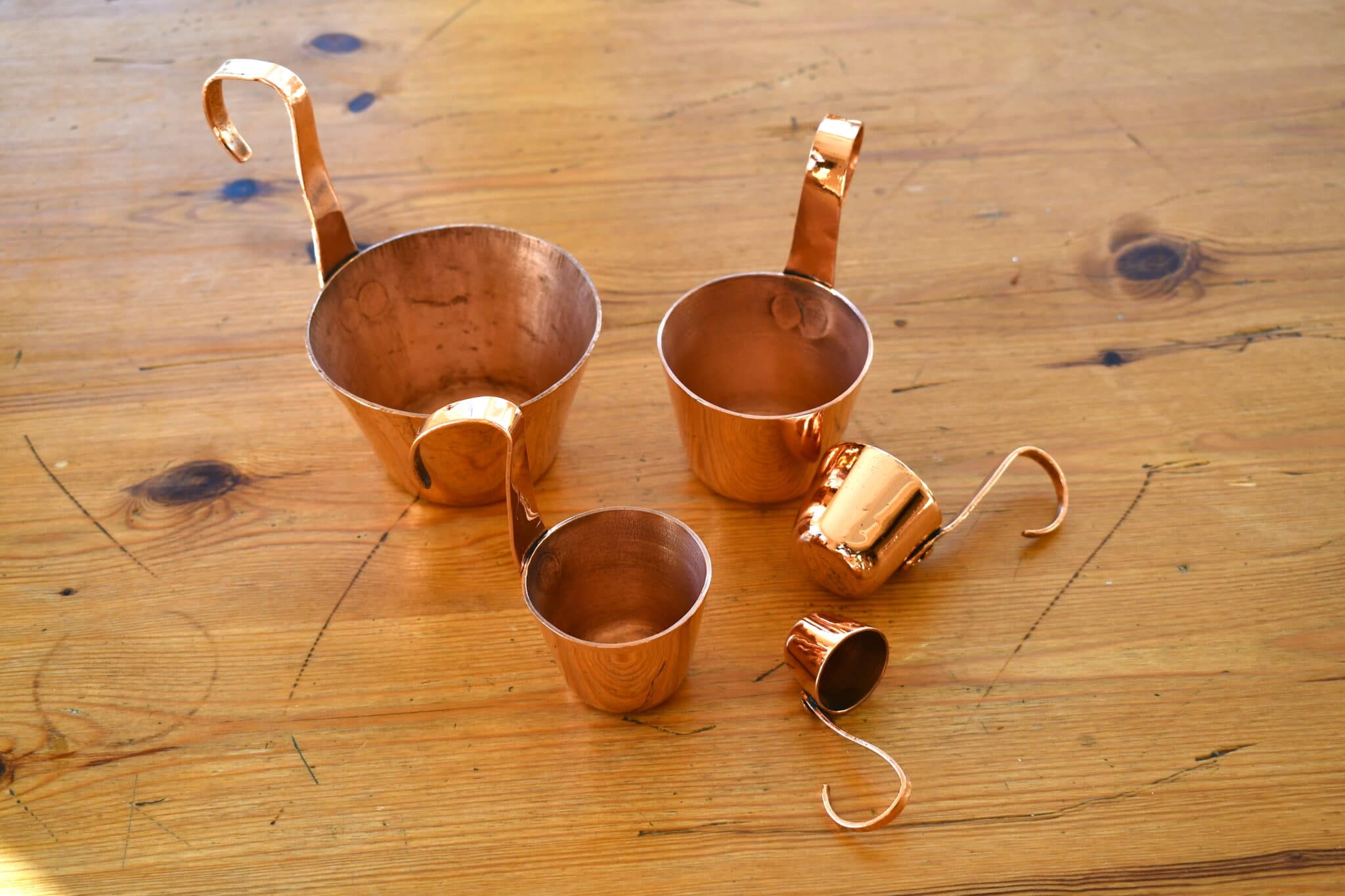
A sauté pan with an impressively beautiful “martelage” and very solid manufacturing. I own a (unfortunately) completely unmarked sauté pan with practically identical dimensions and weight. So also a solidly made heavyweight. However, my sauté pan is only hammered on the side wall and the hammer marks are much smaller, roughly as we know it from the Mauviel Tradition series. The completely round transition from the base to the wall also speaks for a modern production. I would rate your sauté pan as much older. According to VFC, the stamp corresponds to the period 1930-40. The font of the stamp from the 1960-80s is narrower and more elongated. My Gaillard sauté pan 24 also bears this stamp from 1930-40. But the hammer pattern looks different.
What irritates me a bit and doesn’t speak for the time before WWII, however, are the rivets. Unfortunately, I cannot clearly see whether the transition from the base to the side wall is chamfered.
This is a beautiful piece.
After comparing a number of Gaillard stamps from the 1930-40 and 1960-80 periods, I discovered that the distinction is not easy. Not least because I only found few and badly photographed stamps from the newer era. In the case of the stamp, which is ascribed to the years 1960-80, I found the most striking detail that the digits G, A and P seem to touch on the left side of the stamp. With the older stamp, the distances are significantly larger. But I wonder whether these differences and the differences described in the VFC field guide (small arch vs large arch) are possibly just artifacts, due to the execution of the stamping or the distorted and blurred photographs. It would be nice if someone could show us better photos of the newer stamp.
However, if the differences are real, the stamp of Stephen Whalen’s sauté pan looks more like the older version (1930-40) in my eyes. Construction details and stamp would be in contradiction in this case. Strange.
I would be very interested in how others see it.
Hey Martin — I’ll take some better photos and add them to this post.
Editing my own comment to add: I am the source of Martin’s confusion. I mis-identified this pan as 1960s-1980s when the stamp is clearly earlier than that — I think it’s from the era after Jules’s death in the late 1930s, so 1940s-1950s is my guess. “Post-war”? Yes, loosely. I have corrected my mistake in the text and I apologize for creating confusion. I would blame it on Thanksgiving turkey tryptophan but really it was just a mistake on my part!
Martin, To my eyes the stamp on this pan looks closer to the “small arch” stamp shown in VFC’s Gaillard field guide although they do not appear to be exactly the same. The bottom edge of the pan is rounded and not beveled as found in older pans.
VFC, thank you for the release from my confusion and your correction. The chronological classification of the pans made after 1930 is probably no less difficult than with the pans from the “Golden Age”.
Some of the best-known brands were in a transition phase in which they continued to produce themselves, but also increasingly outsourced part of the production. It is often assumed that such commissioned work was mostly done by Mauviel. Since the goods, which were probably manufactured by Mauviel in later years and provided with the stamps of the clients (Gaillard, Jacquotot, Dehillerin, Lejeune, Mora, Chomette, Williams Sonoma, etc.) differ in some details, different explanations are possible. For example these three possibilities:
a) The clients had special requests that Mauviel had to take into account.
b) The production technology at Mauviel changed over time.
c) Craftsmen retired and had to be replaced by new workers.
If this commissioned work was not only taken over by Mauviel, but occasionally also by other companies in Villedieu, the assignment of the “actual” manufacturer and production period would be even more complicated.
PHEW!